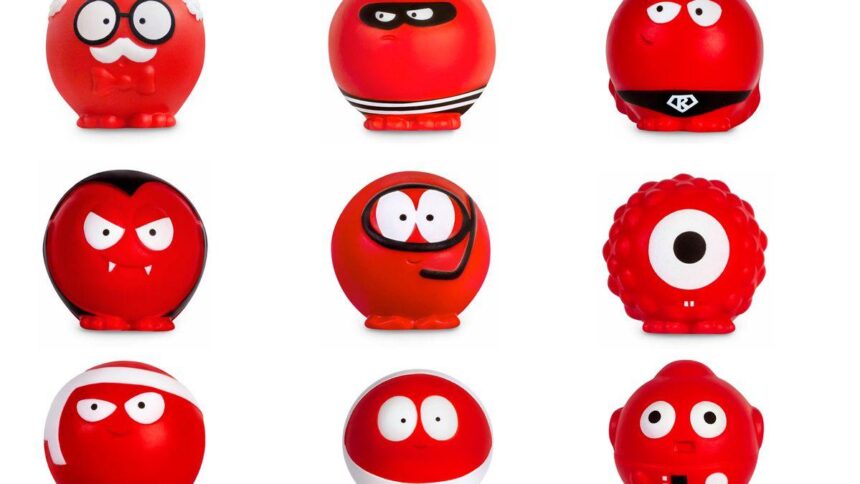Rise of the Red Noses: SF Clown Classes See Uptick in Students
San Francisco, CA – In a surprising twist that combines humor with artistry, clown classes in the heart of San Francisco are witnessing a notable surge in enrollment. As cultural shifts redefine the role of comedy and self-expression in an increasingly complex world, aspiring performers are turning to the playful yet profound discipline of clowning. Once seen as a niche hobby, these courses are now attracting a diverse array of students, from seasoned actors seeking to hone their craft to individuals simply looking to embrace their inner joy. Local instructors are reporting full classes and heightened enthusiasm, igniting conversations about the relevance of clowning in contemporary society and its power to foster connection through laughter. This trend not only highlights a growing public appetite for unique forms of artistic expression but also raises questions about the evolving nature of performance art itself.
Surge in Clown Enthusiasm Spurs Growth in San Francisco’s Performing Arts Scene
In a delightful twist of cultural transformation, the performing arts scene in San Francisco is experiencing an unexpected revival, largely driven by a burgeoning interest in clowning. Local theater schools and community centers report a noticeable uptick in enrollment for clowning classes, a trend attributed to a combination of social media influence and a renewed desire for whimsical entertainment. Participants from diverse backgrounds, ranging from aspiring performers to corporate employees seeking creative outlets, are discovering the joys of nose-painted artistry and the profound impact of humor on human connection. Many students are eager to explore the fundamentals of physical comedy, improvisation, and character creation as they engage with this often-overlooked craft.
As enthusiasts don their floppy shoes and red noses, San Francisco’s clowning community is rallying. The surge in popularity has sparked a variety of community events and workshops, fostering collaborative environments among performers. Examples of the emerging scene include:
- Monthly Open Mic Nights – A platform for new talents to showcase their clowning skills to a supportive audience.
- Collaborative Performances – Events combining different performing arts styles centered around clowning principles.
- Specialized Workshops – Focused sessions led by established clown artists, addressing everything from slapstick techniques to emotional storytelling.
This lively resurgence reflects a broader societal craving for joy and absurdity in everyday life, positioning clowning not merely as entertainment but as a powerful means of expression within the performing arts landscape.
Exploring the Therapeutic Benefits of Clowning in Local Communities
The rise of clowning as a form of therapy has taken root in local communities, driven by an increase in interest and participation in clown classes. Facilitators of these courses emphasize the importance of play and humor in enhancing emotional well-being. Through techniques such as physical comedy, improvisation, and empathetic interaction, participants not only hone their clowning skills but also experience transformative personal growth. The therapeutic benefits of clowning include:
- Stress Relief: Laughter is a proven antidote to anxiety and depression, allowing individuals to release pent-up emotions.
- Enhanced Social Skills: Clowning fosters connectivity and communication, helping participants strengthen their community ties.
- Boosted Creativity: The spontaneous nature of clowning encourages innovative thinking and problem-solving.
Moreover, community clowning workshops aim to promote inclusivity and self-expression. These initiatives provide a safe space where participants can explore their creativity without judgment. As interest in these programs continues to swell, local organizations are investing in resources to expand their reach. The positive impact of clowning can be measured not only through participant satisfaction but also through community feedback. The following table highlights some community responses to these initiatives:
| Aspect | Feedback |
|---|---|
| Overall Enjoyment | 95% reported feeling happier after participation |
| Community Impact | 80% felt more connected to their neighbors |
| Skill Development | 87% noted improvements in creativity and confidence |
Strategies for Aspiring Clowns: Navigating Education and Performance Opportunities
For those looking to don the red nose and embrace the art of clowning, a multitude of educational pathways and performance opportunities are emerging across San Francisco. Aspiring clowns are advised to immerse themselves in both traditional techniques and contemporary practices. Workshops focusing on physical comedy, improvisation, and character development are essential, as they equip students with the foundational skills necessary for effective clown performance. Additionally, mentorship programs connecting novice clowns with seasoned performers can provide valuable insights into the industry, guiding them on matters like stage presence and audience engagement.
Performance opportunities abound, particularly in community events and festivals that celebrate the whimsical nature of clown artistry. For those seeking a more structured platform, many local venues now host open mic nights and clown showcases, allowing emerging talent to refine their craft and gain exposure. To further assist aspiring clowns, here’s a helpful overview of resources available in San Francisco:
| Resource Type | Description |
|---|---|
| Workshops | Intensive classes in clowning techniques and performance skills. |
| Mentoring | Opportunities to learn directly from experienced clowns. |
| Open Mic Nights | Casual performances to test skills in front of an audience. |
| Festivals | Community events where clowns can perform and connect. |
Future Outlook
In conclusion, the resurgence of clowning in San Francisco, marked by a notable increase in students enrolling in local clown classes, reflects a broader societal yearning for humor, creativity, and connection in challenging times. As aspiring performers don their red noses and embrace the art of laughter, they not only preserve a timeless tradition but also cultivate a renewed sense of community and joy. With performances becoming more versatile and inclusive, the world of clowning is evolving, ensuring that the age-old craft remains relevant and accessible. As this vibrant trend continues to unfold, it serves as a testament to the power of humor in bridging gaps and uplifting spirits, reminding us all that sometimes, a good laugh is the best medicine.









